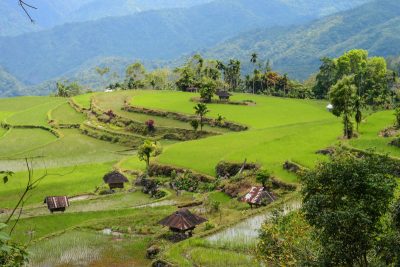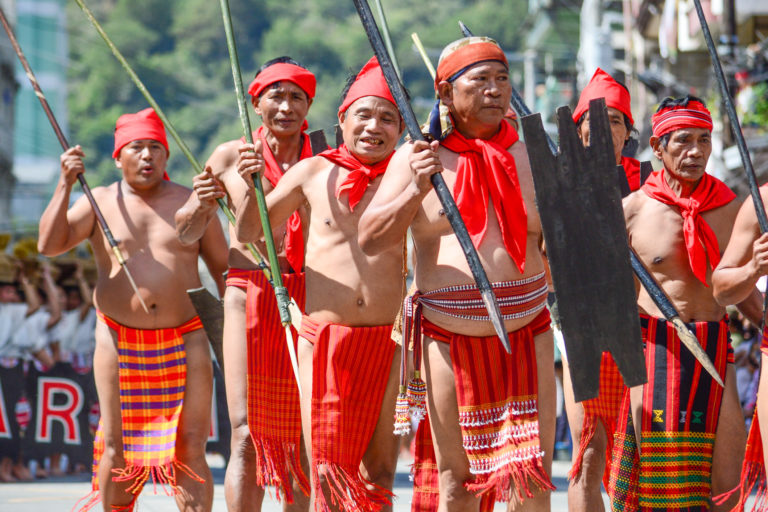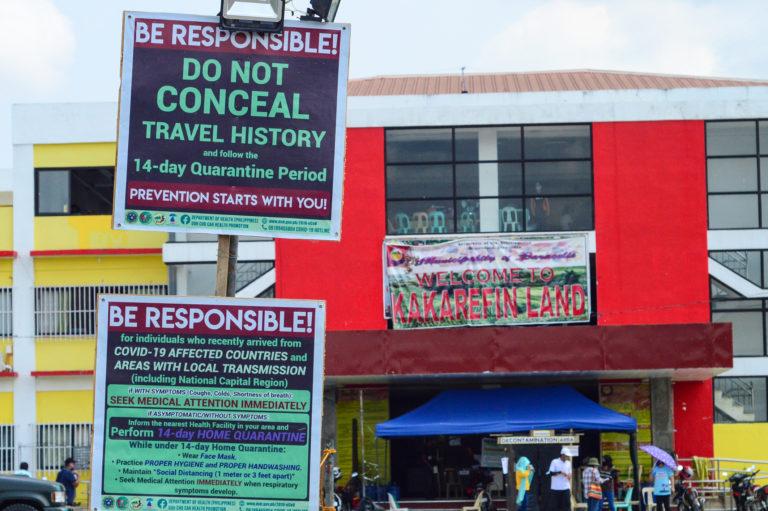In a Philippine Indigenous Stronghold, Traditions Keep COVID-19 at Bay

This article was originally published on Mongabay in April 2020.
Each weekend since March, no one has crossed the boundary into the town of Bauko, in the northern Philippine region of Cordillera. The prohibition, a municipal advisory, was prompted by the invocation of a tengao by community elders, many of whom are also local officials.
A tengao is the indigenous variation of a lockdown; once invoked, it means no one can enter or leave the community for a day or more, depending on the consensus of the council of elders.
Different towns across Mountain Province, one of six that make up the Cordillera region, have invoked this practice, which is also called te-er, to-or, sedey, far-e, ubaya, or tungro by varying ethnolinguistic groups. The Cordillera region is inhabited predominantly by indigenous peoples, with more than 15 distinct ethnolinguistic groups, according to the National Commission on Indigenous Peoples (NCIP). As such, tribal leaders and councils of elders play influential roles in governance.
Municipal councils across Cordillera have a quota for indigenous representation. Known as indigenous people mandatory representatives (IPMR), these are elders who are appointed through customary laws to ensure the participation and welfare of indigenous peoples in crafting laws and policies that affect their rights.
Mountain Province Governor Bonifacio Lacwasan Jr. says the judgment of community elders, especially in critical situations involving public welfare, is held in high regard and often taken into consideration in local governance.
Since towns in the Cordillera region are familiar with indigenous lockdowns, it’s easier for local governments to scale up the lockdown amid the COVID-19 pandemic. Image by Karlston Lapniten
“As indigenous peoples, we listen to bearers of indigenous wisdom because this wisdom has kept our people safe and strong since time immemorial,” he tells Mongabay.
Even locally deployed state security forces respect the imposition of such cultural practices, which when implemented amid the COVID-19 pandemic have complemented the enhanced community quarantine (ECQ) measures imposed by the national government.
This time, the village lockdown model was scaled up to cover entire towns to prevent the entry of potentially infected people into the villages, Lacwasan says.
Lacwasan placed the entire province on lockdown a week after the national government declared the central Philippine island of Luzon, where Manila is located, under ECQ on March 17. This was also driven by confirmed COVID-19 infections in the nearby province of Benguet, also in Cordillera, and in the neighboring Cagayan region.
Since the outbreak began earlier this year and due to the immediate invocation of the tengao, there have been no recorded COVID-19 cases in Mountain Province and the neighboring Cordillera provinces of Ifugao and Kalinga. The whole of the Cordillera region, which also includes the provinces of Abra and Apayao, had 22 confirmed cases with one death as of April 14; nationwide, there were 6,599 cases and 437 deaths as of April 21.
Image on the right: Local security forces are deployed whenever a community invokes an indigenous lockdown. Image by Karlston Lapniten

Indigenous lockdown
While indigenous elders can invoke a lockdown whenever it is deemed necessary, before the pandemic it was usually imposed as a rest period for the community. Often it was declared following festivities or after harvest and planting seasons, to allow people to recover without disturbance from outside the community.
As it’s always been done, the tengao this time started with a ritual by community elders to declare the lockdown period. In villages, a bundle of grass tied into a loose knot is placed at visible areas at the entry points of communities to serve as taboo signs.
When the town of Bauko performed the tengao from March 22 to 23, the community closed its part of the national highway, prohibiting anyone from entering or exiting, without exception, until the ritual was completed. This forced people going to Bontoc, the provincial capital, to take a long detour via the municipality of Banaue in Ifugao province, adding at least four hours to their travel time.
The lockdown takes effect throughout weekends; on weekdays, nighttime curfews are in place, the hours varying between villages. In Bauko, the curfew runs from 8 p.m. to 8 a.m., while in Paracelis, also in Mountain Province, it goes from six in the evening to six the next morning.
For non-locals not familiar with the local semiotics and languages, signs in English have been posted along roads as reminders.
In some Mountain Province towns, physical barriers have been placed on roads to enforce the curfew. Officials in the town of Natonin erected a makeshift wooden gate across their section of the national highway bordering Paracelis, which is locked during the curfew hours. In the town of Tadian, officials blocked the road with rocks, while in Guinzadan village in Bauko, they used tires and mounds of soil.
Violators face penalties, and if anyone inadvertently enters a community under tengao, they must remain until the declaration is lifted.
Mountain Province councilor Federico Onsat, who is also a lawyer, says cultural practices that generally promote the welfare of the public such as lockdowns do not conflict with local policies. “In fact, they confirm the government’s pronouncements just like the need for the people to quarantine themselves to prevent the spread of the virus,” Onsat says.
Protective rituals
Apart from imposing the lockdowns, the elders in Mountain Province also performed rituals meant to ward off disease and disaster and seek protection.
On March 21, elders in the tourist town of Sagada performed the sedey, a ritual invoking the supreme being Lumawig, to cleanse and protect the town from an epidemic.

Indigenous groups like the Gaddang people (above) in the Mountain Province invoke lockdowns after festivals and harvesting and planting seasons. Image by Karlston Lapniten
In Bontoc, revered ama (elder) Changat Fakat performed the manengtey on March 30, a ritual that involved divining omens from the internal organs of a sacrificial chicken. In this case, Changat interpreted the organs, particularly the bile ducts and liver, as presenting signs of protection, which the elders had requested against COVID-19. A fire has been kept burning for several days or until put out by elders in the hearth of dap-ay as a protective charm against the virus.
On April 1, Changat performed a similar ritual again, this time to cover the entire province and its people who are currently in other areas. Both times, local officials such as the mayor and the governor were present, lending official backing to the rituals.
In Malibcong, in Cordillera’s Abra province, the indigenous Itneg people performed the sagubay, a similar ritual to ward off disease and pestilence, on March 17. The ritual involves placing warning signs, usually knotted grass or arched bamboo shoots, along pathways to keep people from entering the town.
Cordillerans have high regard for advice or rituals prescribed by the elders of the dap-ay or ato, the indigenous government system, because of the belief in inayan, a concept akin to karma. “Our culture and traditions existed long before hospitals were put up in communities and they are critical key to why have survived this far,” Governor Lacwasan says.

Predominantly populated by indigenous groups, among them the Balangao tribe (above), the region requires a quota for indigenous representation in municipal councils. Image by Karlston Lapniten
Those traditions have been passed on to the present day because of the fear attached to inayan, says Penelope Domogo, a longtime rural physician who champions indigenous health care systems in Mountain province. Domogo says elders invoke the inayan to prevent the use of soap at water sources to not dry them up.
“This is not superstition. It is a rule crafted by the wisdom of our ancestors meant for our survival [because] clean water is survival,” she says. “Now, we see the rationale and value of these traditions, so common sense dictates we continue these rituals. These are not superstitious beliefs … they are mechanisms for survival, peace, and order.”
*
Note to readers: please click the share buttons above or below. Forward this article to your email lists. Crosspost on your blog site, internet forums. etc.
Featured image: Upland field in the Mountain Province. Image by Karlston Lapniten.


